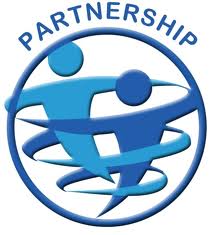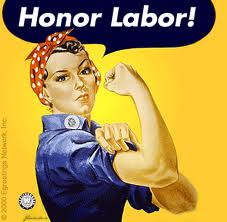 Since starting this blog back in May, I have twice posted articles about Team Obama because I firmly believe that non-profit organizations can learn a lot from what our political fundraising cousins are doing on the other side of town. Please don’t misunderstand me. I don’t just mean that through careful observation non-profits will be able to steal all of their strategies and best practices. I also mean that we can learn from their mistakes.
Since starting this blog back in May, I have twice posted articles about Team Obama because I firmly believe that non-profit organizations can learn a lot from what our political fundraising cousins are doing on the other side of town. Please don’t misunderstand me. I don’t just mean that through careful observation non-profits will be able to steal all of their strategies and best practices. I also mean that we can learn from their mistakes.
For example, let’s look at what happened in my household just yesterday . . .
My phone rings. I answer it, and the person at the other end identifies herself as a someone working for an independent fundraising firm who is raising money “on behalf of” the Obama campaign.
Lesson #1: Think twice about farming out your fundraising to external firms. Keep it internal and recruit volunteers from your board of directors and the community to help solicit prospects and donors. There was nothing this woman could’ve done to prove to me over the telephone that she was actually representing the Obama campaign and not some kind of scam. Volunteers have more credibility than any staff person or hired gun.
Without getting into lots of boring political talk, let me just say that I explained to this solicitor that my partner and I won’t be making a direct contribution to Team Obama’s 2012 re-election efforts. Instead, we’ve decided to shift all of our political contributions to a national political action committee (PAC). I told her to go talk to them if she wants our money.
Lesson #2: My partner and I have changed our giving strategy because we feel powerless and unable to hold national politicians accountable to the things they promised (non-profit translation: the talking points from the campaign’s 2008 “case for support” that inspired us to give in the first place because we wanted to invest in that “impact agenda”). So, here is the lesson for non-profits . . . don’t make promises you cannot keep. Not only will it disenfranchise donors, but they might very well shift their charitable giving to third party funders like United Way in an attempt to attach more accountability to their contribution.
After explaining my position to the telephone solicitor three different ways, she started arguing with me. In the middle of her diatribe, she blurted out her solicitation: “Would you consider making a $5,000 contribution today?” I politely said no. She continued with her rant, and then blurted out “Would you consider making a $2,500 contribution today?” I politely said no and referenced all the reasons I gave 5 minutes earlier. Believe it or not, she continued onward and asked if I could just make an exception and contribute $250. Finally agitated, I firmly said that I wouldn’t even consider $25 and that she needs to go talk to the PAC I referenced earlier. I also asked her to update her donor database records so that I can stop getting these phone calls, emails and direct mail appeals.
By the way, this YouTube video does a nice job capturing what that phone conversation looked like. Check it out if you need a good chuckle today. 🙂 However, I think I just cast myself into the role of the “goat” in that video. Oh well!
Lesson #3: When a donor says “NO” there are two things you need to train your volunteer solicitors to do: 1) don’t argue with them and enter into a auction-like bidding war for their contribution and 2) shut-up, listen, take good mental notes, pass the info back along to staff, and enter the conversation into the donor database as a contact record. Hopefully, staff have developed good systems to address these kind of disenfranchised donors with intense cultivation and stewardship efforts before re-soliciting them in the future.
I used to think that United Way’s best days were behind them, but taking a step back and looking at my household’s new political giving strategy has me re-thinking this position. I suspect that if non-profits don’t start investing in measuring program outcomes and implementing an impact agenda, we might be looking at a time of re-birth for United Way.
What are your thoughts about third-party fundraisers and fund distributors like United Way? Am I way off base in my thinking? What about your thoughts on the three lessons I’ve highlighted? How do you train your volunteer solicitors to deal with donors like me? What systems do you have in place to secure donor conversations and react to a failed solicitation?
Please use the comment box below to weigh-in with your thoughts because we can all learn from each other.
Here is to your health!
Erik Anderson Owner, The Healthy Non-Profit LLC eanderson847@gmail.com http://twitter.com/#!/eanderson847 http://www.facebook.com/eanderson847 http://www.linkedin.com/in/erikanderson847







